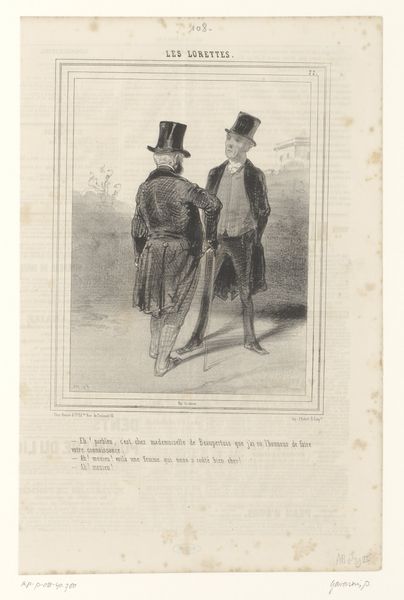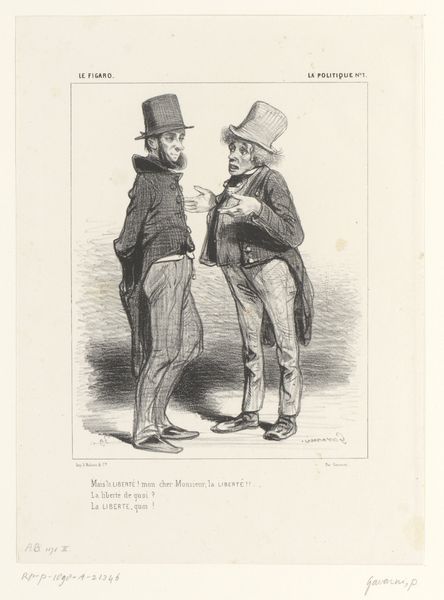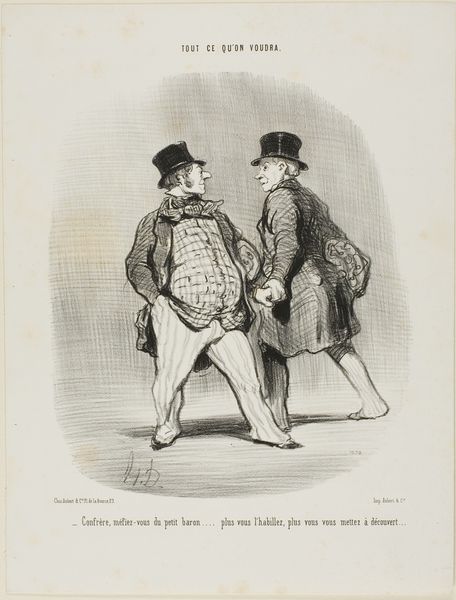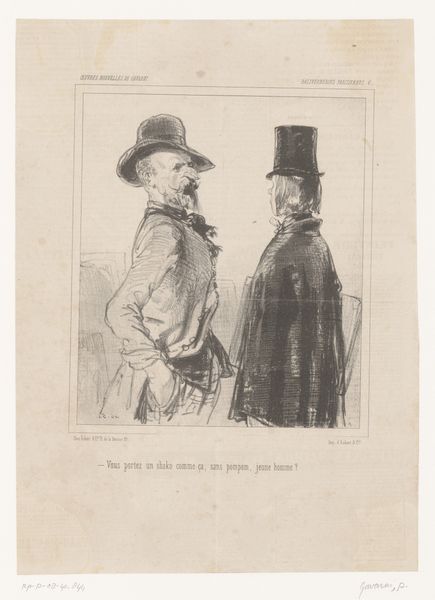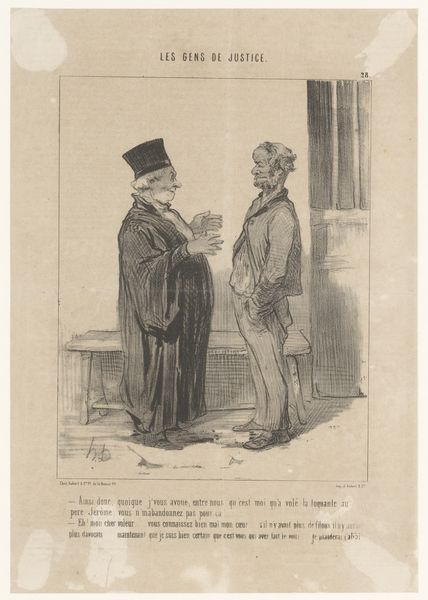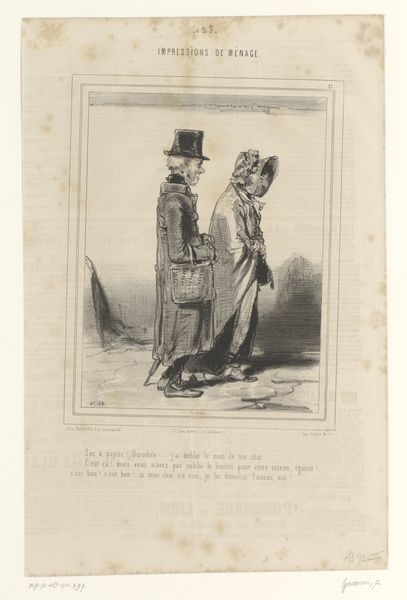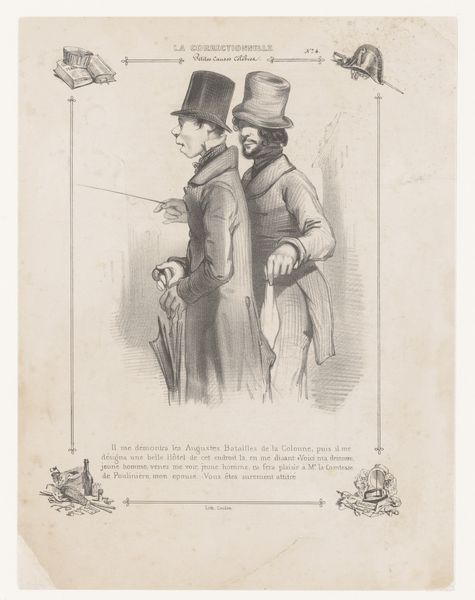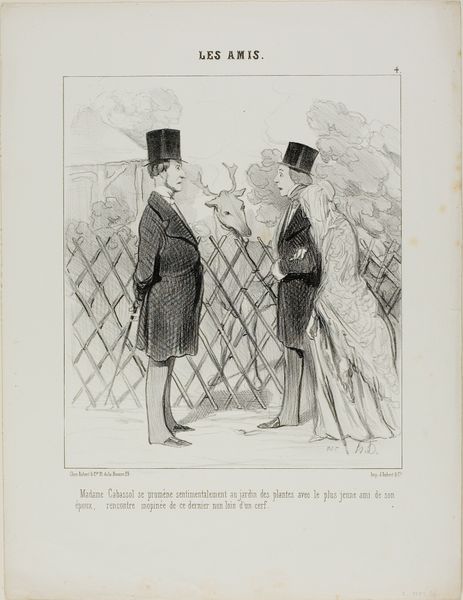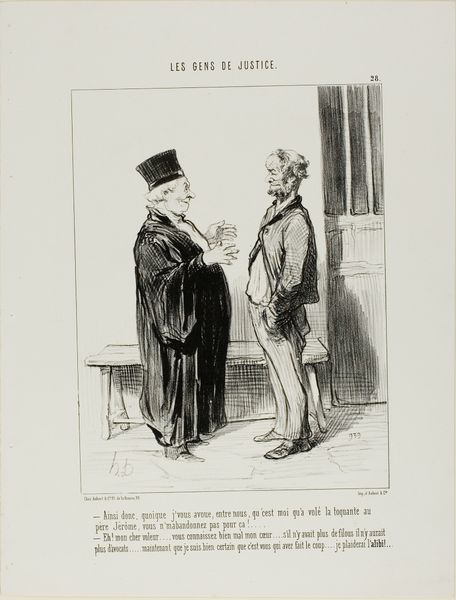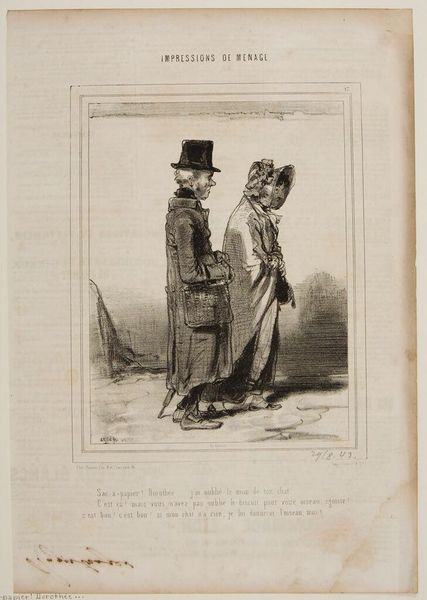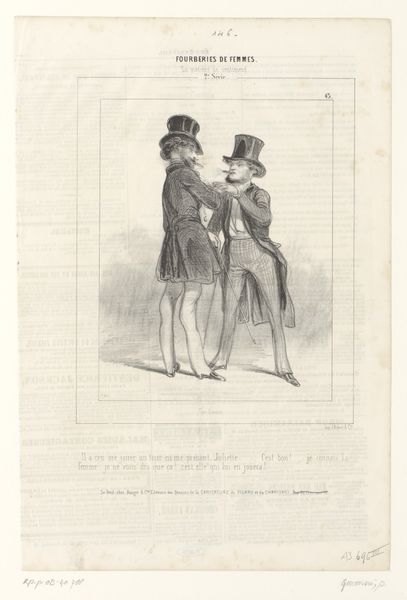
lithograph, print
#
16_19th-century
#
narrative-art
#
lithograph
# print
#
caricature
#
figuration
#
france
#
genre-painting
#
history-painting
#
academic-art
Dimensions: 7 9/16 x 6 3/8 in. (19.21 x 16.19 cm) (image)14 1/8 x 10 7/8 in. (35.88 x 27.62 cm) (sheet)
Copyright: Public Domain
Editor: Here we have Paul Gavarni's lithograph, "Plate from 'Histoire d'en dire deux'," created in 1853. The scene, depicting two gentlemen in conversation, has this wonderfully satirical edge. How do you see this piece fitting within its historical context? Curator: It's essential to consider Gavarni's lithograph within the burgeoning Parisian print culture of the mid-19th century. Caricature flourished then, largely fueled by publications eager to critique social mores and political figures. This image, seemingly a simple exchange, becomes a commentary on the complex social fabric. Notice how dress and body language denote class; how might that relate to contemporary societal anxieties? Editor: That makes sense. It's interesting to see how clothing becomes a signifier. Is the backdrop with a sculptural figure significant? Curator: Absolutely. The monumental sculpture suggests an aspiration toward classical ideals, perhaps unattainable for the bourgeois figures in the foreground. Gavarni subtly plays with this tension, contrasting the idealized past with the sometimes absurd present. How does the presence of that background statue influence your reading of the main figures and their interactions? Editor: So, the humor lies not just in the characters themselves but in their placement within this broader cultural landscape. The art isn't separate from society; it’s very much a part of the cultural commentary! I'll certainly look at 19th-century prints with a sharper eye for those societal dynamics now. Curator: Exactly. Thinking about art as part of larger social and political forces opens up entirely new pathways for understanding its meanings and enduring impact.
Comments
No comments
Be the first to comment and join the conversation on the ultimate creative platform.

